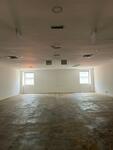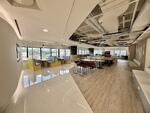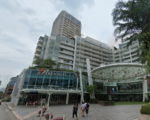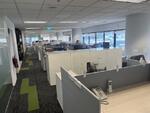District 6 is abound with some of Singapore’s best nightlife as it houses noted clubs, pubs and bars that are juxtaposed with the richness of Singapore’s architectural and historical roots like City Hall and the Old Supreme Court. What had begun as a well-known region from the early 19th century as one of the oldest ports of Singapore reflected in historical remnants like brass statues that line the Singapore River, District 6 is now one of the busiest regions that provide a wide array of options for both work and play with various amenities like Parkview Square, High Street Centre and Peninsula Shopping Centre.
Overshadowed by its reputation for a hotspot for clubbing and leisure, Clarke Quay acquires a rich historical significance for Singapore. Named in remembrance of Sir Andrew Clarke, Singapore’s second Governor and Governor of the Straits Settlements from 1873 to 1875, Clarke Quay had its humble beginnings as a pedestrian mall. Firewood trade in 19th century Singapore took place in Clarke Quay as well. Today, various warehouses in Clarke Quay house well-known restaurants and nightclubs; moored Chinese junks or old boats used f...
(Read More)
District 6 is abound with some of Singapore’s best nightlife as it houses noted clubs, pubs and bars that are juxtaposed with the richness of Singapore’s architectural and historical roots like City Hall and the Old Supreme Court. What had begun as a well-known region from the early 19th century as one of the oldest ports of Singapore reflected in historical remnants like brass statues that line the Singapore River, District 6 is now one of the busiest regions that provide a wide array of options for both work and play with various amenities like Parkview Square, High Street Centre and Peninsula Shopping Centre.
Overshadowed by its reputation for a hotspot for clubbing and leisure, Clarke Quay acquires a rich historical significance for Singapore. Named in remembrance of Sir Andrew Clarke, Singapore’s second Governor and Governor of the Straits Settlements from 1873 to 1875, Clarke Quay had its humble beginnings as a pedestrian mall. Firewood trade in 19th century Singapore took place in Clarke Quay as well. Today, various warehouses in Clarke Quay house well-known restaurants and nightclubs; moored Chinese junks or old boats used for firewood trade in the past have also been revamped into floating pubs and restaurants—The Cannery is one such tenants of these old Chinese junks. The Arena, a nightclub touted as the largest international live music venue, is also home to Singapore’s First Permanent Illusion Show. In Clarke Quay, it is also hard to miss the G-MAX reverse bungee that is located nearby The Central, a shopping centre that lies right above the Clarke Quay MRT Station.
In stark contrast, City Hall has been often perceived as an austere juxtaposition to the vibrant nightlife of Clarke Quay. This is so because of neo-classical buildings like the old Capitol Building and St. Andrews Cathedral; and old governmental buildings like the Supreme Court and the City Hall structure that bore witness to the atrocities of the Second World War, as it served as the Japanese main centre of deployment of Prisoners of War. It is however also within City Hall that saw the birth of Singapore as then-Prime Minister Lee Kuan Yew declared her independence from Malaysia in 1965. Today however, these apparently austere buildings have been re-developed as the new site for the National Art Gallery of Singapore, allowing City Hall to transit into a new arts and culture hub. City Hall also encompasses several leisure places for tourists, including a wide variety of hotels like Swissotel The Stamford Singapore; Fairmont Singapore; Carlton Hotel Singapore ; and the Grand Park City Hall. It also provides a great place for visitors to wind down for a drink at CHIJMES, Food for Thought or even the Singapore Recreation Club.
(Less)












